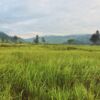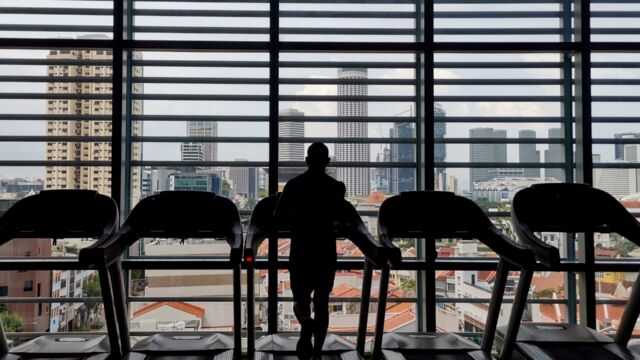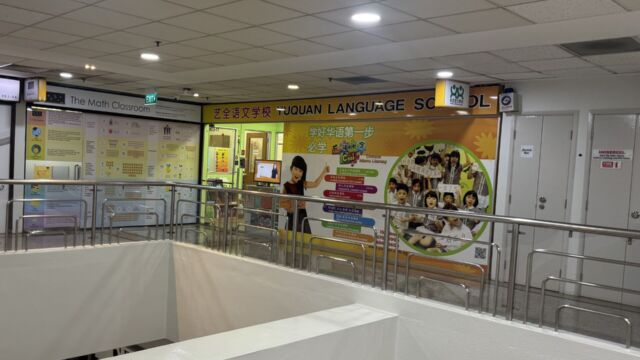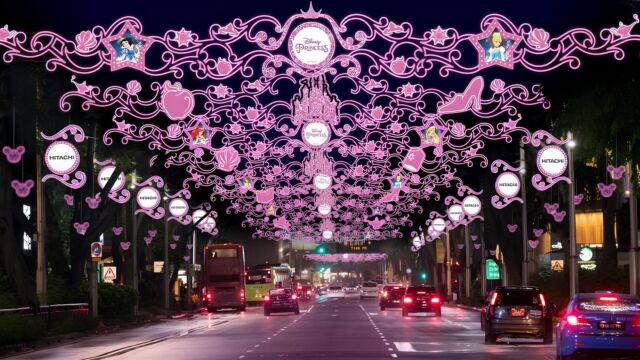Why We Wear Backpacks in Little India
Photo: Luah Jun Yang/Unsplash
Ophir Road to Owen Road | 2,522 words
Every Sunday, I visit the Church of Our Lady of Lourdes along Ophir Road, then take a walk through Little India. I do this because I search for my late father in these places and in their crowds, even though I know he is gone. My father, Eddy Pereira, used to attend this church as a boy, then sing Christmas carols at the top of his lungs at midnight as he walked back home to Owen Road.
Each week, I look forward to keeping his memory alive as I hear his name read out during the prayers for the souls of the dead. I share his love for singing and sing with the choir every Sunday. We usually stand beside an air-conditioned makeshift tent, with fans to cool the thick, humid air. The tent is separated from the main church building, the ivory white edifice of which reflects the harsh sunlight. The statue of an archangel atop one of its spires appears to guard the congregation, to watch over us.
I have attended many family funerals and weddings here. Some of its parishioners are second-generation Catholic Indians from Kerala, where my father was born. Today, the church continues to attract new immigrants from India as well as Filipino domestic helpers, living in Singapore on temporary work permits. The church has a Tamil service at seven o’clock every evening– a devout crowd that masses under the tent and spills onto the roadside car park, the women often in their Sunday-best sarees. The statue of Our Lady of Lourdes that stands here is similarly adorned with the love and respect of old Indian traditions. Many devotees hang garlands of white jasmine flowers on her and light camphor in clay lamps around her. She stands above a man-made pond in blue and white robes, a replica of the statue in Lourdes, France. Many devotees visit Lourdes on pilgrimages to bring home bottles of holy water: church records have documented the miraculous curing of ailments when devotees have drunk from its spring.
After mass, I carry my backpack and begin my walk.
The traffic never stops moving, nor do the waves of constant construction. Sim Lim Square shopping mall looms over two-story shophouses on the opposite side of the street. Its dark blue glass panes absorb sunlight, and an enormous ad for the latest DēLonghi coffee machine is pasted to its side. Though it is an older mall, it has survived the threat of demolition because it sells six stories of the latest in-demand electronic products, from mobiles to laptops to keyhole-sized security cameras. While the facades of the old colonial shophouses are preserved, the area continues to gentrify. A multinational crowd of tourists, migrant workers and locals patronize the stalls. Independent artisan cafes and bars have opened up, along with Thai massage parlors and budget hotels for backpackers. If Daddy had been here today, he would have protested loudly at the price of a cup of coffee in one of these cafes. He would have steered us into an Indian coffee shop instead, with Bru instant coffee on its menu.
Different religions coexist between the main roads of Jalan Besar and Serangoon Road. Hidden among the shophouses on Dunlop Street I glimpse a small mosque, the Abdul Gaffoor mosque, with a white and green crescent moon atop its minaret. Further along Serangoon Road I see Sri Veeramakaliaman Temple, with its tall gopuram of multicolored deities decorating its front. Each is a historical relic in its own right, a representation of the multifaceted identities of the Indian population in Singapore. Sometimes, my father and I bumped into family friends buying garlands from the nearby flower shops to give as offerings at the temple and we would pause to catch up. Such easy interactions amid diversity are typical of Little India.

I see a barefooted man walk out of UOB Bank at Sim Lim Square. He looks like a yogi, dressed in a long, white dhoti that is wrapped around his waist, the end of it slung over his bare shoulder. The sight of this holy man, with his lustrous black hair knotted in a loose bun at the top of his head, and his soft, shiny, watermelon-shaped belly, is startling. He might be more comfortable sitting under a tree in deep meditation. If the century turned its clock backwards, he might not have dressed any differently. Yet, here he is, feet treading noiselessly on the asphalt like a spirit keeping silence against the throb of the traffic.
Perhaps this ancient man is a Hindu priest. But in some ways, he reminds me of my father. I awoke once, in the middle of the night, to find him propped against the concrete wall of our flat, perfectly poised on his bald head in an upside-down lotus position, a small wax candle lit in the corner of the room.
The deeper I go into Little India, the more vibrant the colors become, while people pulse more noisily than the traffic. A group of foreign workers strolls dangerously close to the cars. One of them lifts his shirt and unabashedly rubs his stomach, recently filled from a meal that tasted like his mother’s cooking. He is at home with himself. Where there are gaps between buildings, more groups of foreign workers make themselves comfortable on the small patches of grass, spreading brown paper packets of rice and yellow dhal curry. Some sprawl languidly, using their backpacks as pillows to look up at the sky.
This is the beauty of Little India. It smells like their mothers’ cooking. It smells like my grandmother’s cooking.
Sunday is the official day off for most migrant workers in Singapore. Most of them come from Bangladesh and India, usually working in construction. They toil in the heat to continue to build and rebuild the city’s high-rise residential homes to serve its population of five and half million. While the country has made some progress in building dormitories for them, and making the off-day mandatory in 2012, there are few places for recreation, so they carve spaces for themselves on these grass patches in between buildings, congregating with food and drink, often dressed in simple, unironed collared shirts and black trousers. And they always carry backpacks. My father never left home without his backpack, just like these workers.

Taxi-drivers learn to identify cultures by common sets of habits. A large backpack and burnt skin will immediately provoke an interrogation: ‘You from India, ah?’ You see, when you are far from home, you try to carry it around with you, and hold it close to yourself. My father came from Kerala on a boat before World War II. He never returned, but there was no loss of country or culture for a boy who had a home in Little India, where so many had carried pieces of their culture here in packs from boats. Even today’s Indian expats sometimes carry the flavors of their wife’s cooking in tiffin containers for lunch inside their backpacks.
My father carried a variety of things inside his backpack—comfort food, mostly, after my grandmother died. Every Saturday, he would give himself a small, solitary luxury by buying a plate of dhosai and making sure it was swimming in tomato chutney. Then, he would wipe the plate clean with his fingers and lick every last drop off it. If the restaurants were stingy with refilling the chutney on his plate, he would balk at their selfishness and never return. But most of the time, they conceded, and he would buy a few extra packets to take home to my mother, nearly filling up his backpack to the brim.
I too, carry a backpack, a habit I have recently picked up. It is a bright and flowery bag, different from my father’s more utilitarian one. When someone has died, perhaps you attempt to carry their lives to shield yourself from the emptiness of their loss. I am conscious of wanting to match the bag with my bright, orange Adidas shoes, perhaps in an attempt to fill the void of my grief with color. I started taking a portraiture class at LASALLE College of the Arts a month after he died. Its building is also located near Little India, a large asymmetrical glass structure that looks like an art installation of glass container classrooms stacked on top of each other. Each week, I filled my bag with my art materials as I journeyed towards painting a portrait of my father.
I have also started, like my father, carrying food from home with me. Having recently turned vegetarian, I have started to cook new versions of comfort food – quick and easier recipes from pre-made dhosai mixes, for instance. And I, too, now have the same dhosai tea habit. I appear to have recently made a set of unconscious decisions in my life that have me converging on this epicenter of Little India at different times of the week to satisfy my cravings. I take a yoga class with my good friend, Hema, near Cathay on Thursdays, and we finish it off with dhosai and appom at Ananda Bhavan on Serangoon Road every single time, with me licking my fingers just like my father did. We share the same thirst for a limitless supply of chutney.
Despite walking through the streets of Little India my whole life, I always discover something new. Today, I notice that the coffee shops along Dunlop Street sell varieties of staple dishes that I have yet to try. At a roadside stall, I marvel at the creative concoctions of all kinds of idlis, from mint idly to Manchurian idly to ponni idly. The other shops are equally packed with everything you could possibly need. The electronics store sells socks. The grocery stores sell makeup, belts and watches. The supermarket still stocks brands of face-cream that my grandmother used, like Pond’s. The haphazard assortment of household items reminds me of the drawers in my grandmother’s home.
Block 25 at Owen Road was a single story flat, one of the first flats to be built after the Second World War. The same types of buildings have been preserved at Tiong Bahru, but Block 25 is now an area of flat grass obscured by tall buildings like Farrer Park Hotel and Farrer Park Hospital. When I was a child, family members would congregate in Mama’s kitchen, plates filled with all the food she had cooked. We used our hands to mold small mountains of rice into bite-sized portions mixed with Mama’s signature cinnamon-flavored chicken curry, fresh tomatoes and Mama’s pepper water. Sometimes Mama cooked upama, a common grain from Kerala, and we mashed bananas with red sugar for breakfast. When she cooked chicken, if I found the wishbone, my father would have a wishbone-biting competition with me. We had to bite the edge to see who would win its heart-shaped center to earn the right of a wish.
Today, I cross Serangoon Road and make my way to Swaadhisht on Chander Road. I often visit this overtly Keralite restaurant, its walls lined with paintings of Malayalee women lounging on the grass of the countryside and playing the sitar. I recognize bits of culture that I have learnt about on trips to India, such as pictures of green-faced actors of koodiyatam. I order a vegetarian set meal. It is an intricate piece of art served on a banana leaf on a metal plate. For vegetarians, this set meal is a wholesome treat with every possible flavour to satisfy the palate. It is served with ponni rice, an oval-shaped grain that is light and easy on the stomach and that holds the flavors of the curries well. The round metal plate comes with at least seven bowls containing a different vegetable. Each curry uses different parts of the coconut, a staple in Kerala cuisine. In the vegetable sambar, there are bits of ground coconut, in another dish is spinach cooked in a light coconut cream, and the dessert is decorated with coconut flakes.
I am happy that the set meal is not too spicy: on a recent Ayurvedic trip to Kottayam in Kerala, I discovered that my body has a Pitta dosha or fire constitution, which means that spicy foods irritate my digestive tract. My father would have laughed at my weak stomach and scoffed at my newfound interest in traditional medicine. He had little memory of India and no desire to return, preferring to proudly call himself Singaporean. He married my mother, who is Chinese, and they shared a bond that was connected by religion more than race. Perhaps he never quite came to terms with the death of his own father, Callistus Raymond Pereira, who died in a bomb blast shortly after they settled in Singapore, during the Second World War. So I’ve sought to deepen my education in my own culture on my own. Having found out from my auntie about the location of some distant relatives in India, I visited my grandmother’s sister, Auntie Nikki, who is now in her nineties. She hugged me as hard as my grandmother did when she saw me and whipped up a feast of the same dishes that my grandmother used to cook. It felt like coming home to Owen Road, except that I was in India. I had always carried a piece of it in my heart, though I was not born there. I now fully understand how, for Indian immigrants, this area of Singapore, Little India, was a heartfelt reconstruction of memories of home.
Ever since my father died, I have also taken a liking to Ayurvedic oil massage at Ayush Ayurveda along Race Course Road. As the oiliest of massages, the Ayurvedic massage reminds me of my father’s oily head. He used to carry me on his shoulders as a child, while I lovingly rubbed his shiny, bald pate. Nowadays, I find a childlike comfort in being soaked in oil and having my body massaged in a manner that one would have received from a parent, growing up.
Given the holistic nature of Ayurvedic healing, excellent at treating depression and insomnia, having an oil massage is where I allow myself to be healed from my grief. It’s a wonder how traditional beliefs are making so much sense to me these days.
The vegetarian set meal that I have ordered from Swaadhisht is too much to finish alone. I signal to the waiter who takes away the leftovers and returns with the dishes packed into small plastic bags and then within a larger brown bag.
Like the workers on the street, I take my food packet and place it in my backpack.
I decide against having a massage because my belly is now too full to be manipulated. Grief is stored in the belly, according to Ayurvedic teaching.
Slowly, I make my way home. But I will return to Little India next week, and for many more weeks to come, carrying my backpack on my back, searching for signs of my father.
© Gemma Pereira
Commissioning editor: Verena Tay






